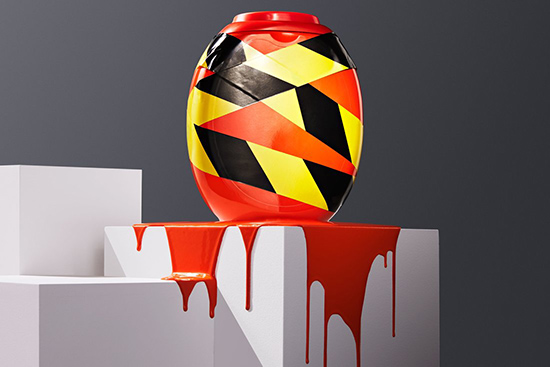这款洗衣神器竟然能杀人,该怎么破?
|
在著名消费品巨头宝洁的181年历史上,汰渍洗衣凝珠堪称最成功的创新之一。洗衣凝珠几乎一夜之间爆红,变成家用产品里最畅销的品牌。八年前,美国商店里还几乎没有小包装的液体洗衣液;2018年已经占领近五分之一洗衣用品市场,销售额达15亿美元。另外,宝洁旗下的汰渍凝珠和另一个流行品牌Gain Flings占据了79%的市场份额。 但推动洗衣凝珠成功的设计因素,非常紧凑、拿取方便,以及非常漂亮的外观也有潜在的致命缺陷。目前来看,幼儿和老年痴呆症患者常常误认为是糖果,有可能吃下去。一旦出现这种情况,洗衣凝珠造成的后果比其他清洁剂和家用清洁产品更严重。 2012年洗衣凝珠在北美上市后,对公共安全的威胁立即出现。2011年至2013年期间,每年急诊科里儿童因洗衣液受伤就诊次数增加了两倍多,从2862次增至9004次。 大多数损伤可以在24小时内消除,无长期影响。但美国毒物控制中心协会(AAPCC)的数据显示,洗衣凝珠虽然市场份额仅占16%,却占与洗衣用品相关严重伤害的80%。遇上贝拉一样的严重案例,可能出现长期并发症。美国与洗衣凝珠直接相关的死亡案例已达9起,其中包括两名2岁以下儿童和七名老年痴呆症患者。 至于已知危险的消费者中毒案例,大多要怪愚蠢的互联网挑战。2017年年底,一些青少年开始在网上发布吃洗衣凝珠的视频,后来发展成离奇的病毒传播现象,叫做“汰渍凝珠挑战”。该事件中洗衣凝珠中毒属于自我伤害,只影响到不负责任的人。不过凝珠挑战导致的中毒案例只占总数的一小部分。 面临激增的中毒数字,还有来自于监管机构的压力,宝洁和其他凝珠制造商都吓了一跳,于是重新讨论产品的设计。尽管凝珠的设计和外部包装多次变化,围绕安全问题密集召开了行业会议,也经过了七年头脑风暴和测试,但从毒物控制中心收到的呼叫数和急诊室病例来看,情况并没有实质性改善。 2013年以来,每年因洗衣凝珠打电话给毒物中心求助的电话里有平均有11568次涉及幼儿,2013年是这种产品在美国市场上市的第一个整年。(大多数涉及洗衣凝珠的电话求助或中毒案例并未造成严重伤害,不过可以借此估算受影响的人群,判断洗衣凝珠对公共卫生的影响。) 造成伤害时,严重程度也各不相同。有数据记录的最近一年2017年里,35%的凝珠伤害病例最终去医院接受治疗。如果排除凝珠,洗衣剂和家庭清洁剂导致前往医院就医的比例为16%。 |
Tide Pods are arguably one of the most successful innovations in the storied, 181-year history of ¬consumer goods leviathan Procter & Gamble. They’re also the top-selling brand in a household-product category that became ubiquitous practically overnight. Eight years ago, liquid-detergent packets were barely a presence in U.S. stores; by 2018 they accounted for nearly one-fifth of the laundry detergent market and $1.5 billion in sales. And P&G, the maker of Tide Pods and another popular brand, Gain Flings, controls 79% of that business. But the design factors that have made laundry pods so successful—their compactness, easy accessibility, and aesthetically pleasing look—are also potentially fatal flaws. Too often, it appears, young children and seniors with dementia mistake them for candy and try to eat them. And when that happens, they’re more likely than other detergents and other household cleaning products to cause serious injury. Laundry pods’ threat to public safety became apparent immediately after their North America launch in 2012. Between 2011 and 2013, the number of annual emergency-department visits for all laundry detergent-related injuries for young children more than tripled, from 2,862 to 9,004. The majority of injuries resolve within 24 hours without long-lasting effects. Still, pods make up 80% of all major injuries related to laundry detergent, according to the American Association for Poison Control Centers (AAPCC), despite accounting for only 16% of the market. In rare cases like Bella’s, long-term complications can ensue. And nine people have died in the U.S.—two children younger than age 2 and seven seniors with dementia—in cases definitively linked to laundry pods. To the extent that most consumers are aware of these dangers, it’s thanks to an asinine Internet trend. In late 2017 a handful of teenagers started posting videos online of themselves eating laundry packets in a surreal viral phenomenon known as the Tide Pod Challenge. That cultural episode cast laundry-pod poisoning as a self-inflicted wound, harming only the irresponsible. But the Challenge has accounted for only a tiny fraction of the injuries caused by this now pervasive product. P&G and other detergent makers, startled by soaring numbers and prodded by regulators, have taken the product back to the drawing board more than once. But despite multiple changes to the pods’ design and exterior packaging, intensive industrywide meetings on the issue, and seven years of brainstorming and testing, the situation has not substantially improved when measured by the total number of calls to poison-control centers and emergency-department visits. Pods have prompted an average of 11,568 poison-control calls a year involving young children since 2013, their first full year on the U.S. market. (The majority of calls, or exposures, involving pods are not associated with serious injuries, but they’re the best ¬population-wide data available to measure pods’ impact on public health.) And when injuries are inflicted, they remain disproportionately severe: In 2017, the most recent year for which figures are available, 35% of pod exposure cases among the whole population wound up being treated in health care facilities; for all other laundry detergents and for household cleaning substances, that figure was 16% when pods were excluded. |

|
消费者权益倡导者和公共卫生专家认为,尽管行业做了很多善意努力,还是拒绝直面房间里的大象(意思是一些非常显而易见,却一直被忽略的问题——译者注),这次还是颜色鲜艳的彩色大象,洗衣液的小包装上有多彩漩涡装饰,看起来太像糖果。美国儿童医院伤害研究和政策中心主任加里·史密斯表示,如果制造商能把洗衣凝珠设计得更中性,没那么诱人,“就可以通过设计解决问题。” 宝洁和其他洗衣用品生产商指出,目前已经应用各种防止伤害措施,而且认为即便不采取相关措施也降低了伤害几率,因为已经改善包装降低儿童误食几率,也在不断教育公众培养正确的使用习惯。 “我们的工作是完全防止儿童接触到产品。” 宝洁负责全球传播和推广的副总裁达蒙·琼斯表示。 虽然并未排除进一步改进的可能,但行业和监管机构已经宣布暂无计划更积极地介入安全预防。但在当今时代,许多面向消费者的企业都有空间实施自我管理,汰渍洗衣凝珠引发的困境提出了紧急且令人不安的问题。宝洁到底有没有尽全力确保畅销产品的安全?由于没有法律规定限制洗衣凝珠的安全性,能否根据伦理要求行业进一步自律?如果一款“已改进”的产品每年仍会导致数千次入院医治,能不能算安全?制造商对事故的责任到哪个点终止,又从哪一点开始应该由消费者负责任? 种种问题证明了美国消费品生态系统里一个基本事实:如何应对消费者风险在很大程度上取决于企业。虽然政府机构偶尔会介入,但安全决策通常由企业领导者制定,企业往往会在产品成功与声誉和法律问题之间寻求平衡。至少目前宝洁已经下了判断,汰渍洗衣凝珠安全没问题。 |
Consumer advocates and public health experts argue that, for all its well-intentioned efforts, the industry has refused to confront the brightly colored elephant in the room: the swirly, multi-hue design schemes that make the mini-packets look so much like candy. If manufacturers can bring themselves to make all pods look neutral and less inviting, says Gary Smith, director of the Center for Injury Research and Policy at Nationwide Children’s Hospital, “we can design this problem out of existence.” P&G and other detergent makers point to different injury measures, arguing that they’ve brought down the market-adjusted rate of exposures even without such changes, by improving the childproofing of packaging and educating the public on proper safety habits. “Our job is to prevent children from having access to the product completely,” says Damon Jones, P&G’s vice president for global communications and advocacy. While they haven’t ruled out future changes, industry and regulators have announced no plans for a more aggressive safety intervention. But in an era in which many consumer-facing businesses have tremendous leeway to regulate themselves, the Tide Pod dilemma raises urgent and disturbing questions. Has P&G truly reached the limit as to how safe it can make its popular product? With no legal requirements to make pods safer, do ethics require the industry to go further? Can an “improved” product that still causes thousands of hospital visits a year be considered safe? And at what point does the manufacturer’s responsibility for accidents end and the consumer’s begin? That these questions need to be asked testifies to a fundamental truth of America’s consumer product ecosystem: It’s largely up to companies to determine how to respond to a consumer hazard. While government agencies occasionally step in, safety decisions usually come down to business leaders balancing the success of a product against reputational and legal concerns. At least for now, P&G has made its determination: The Tide Pod is safe. |













